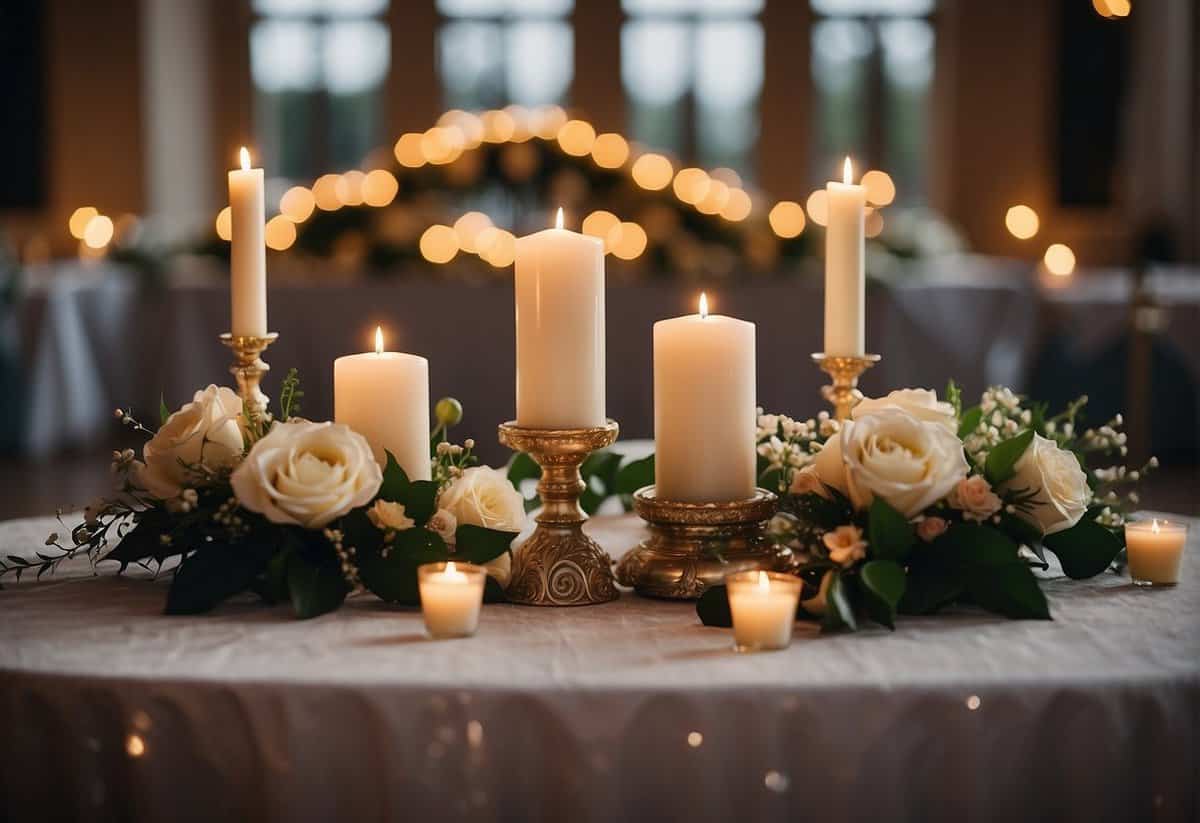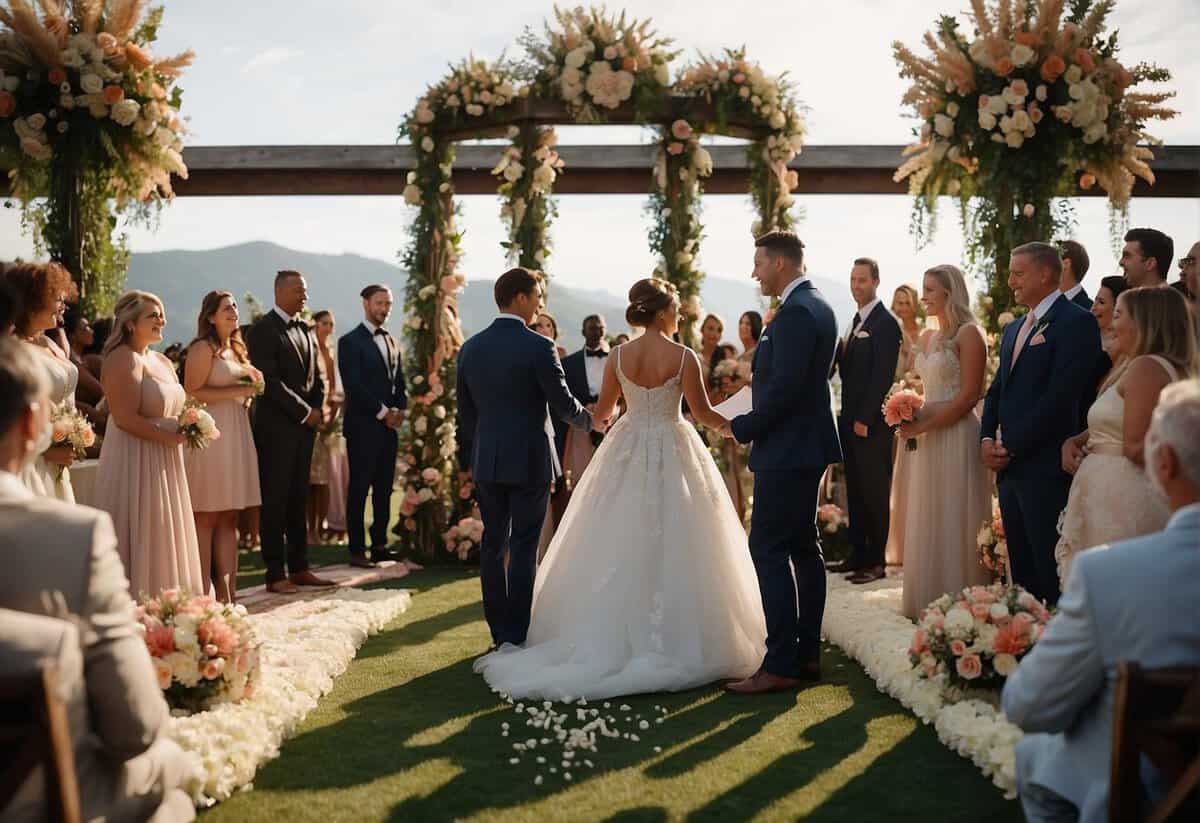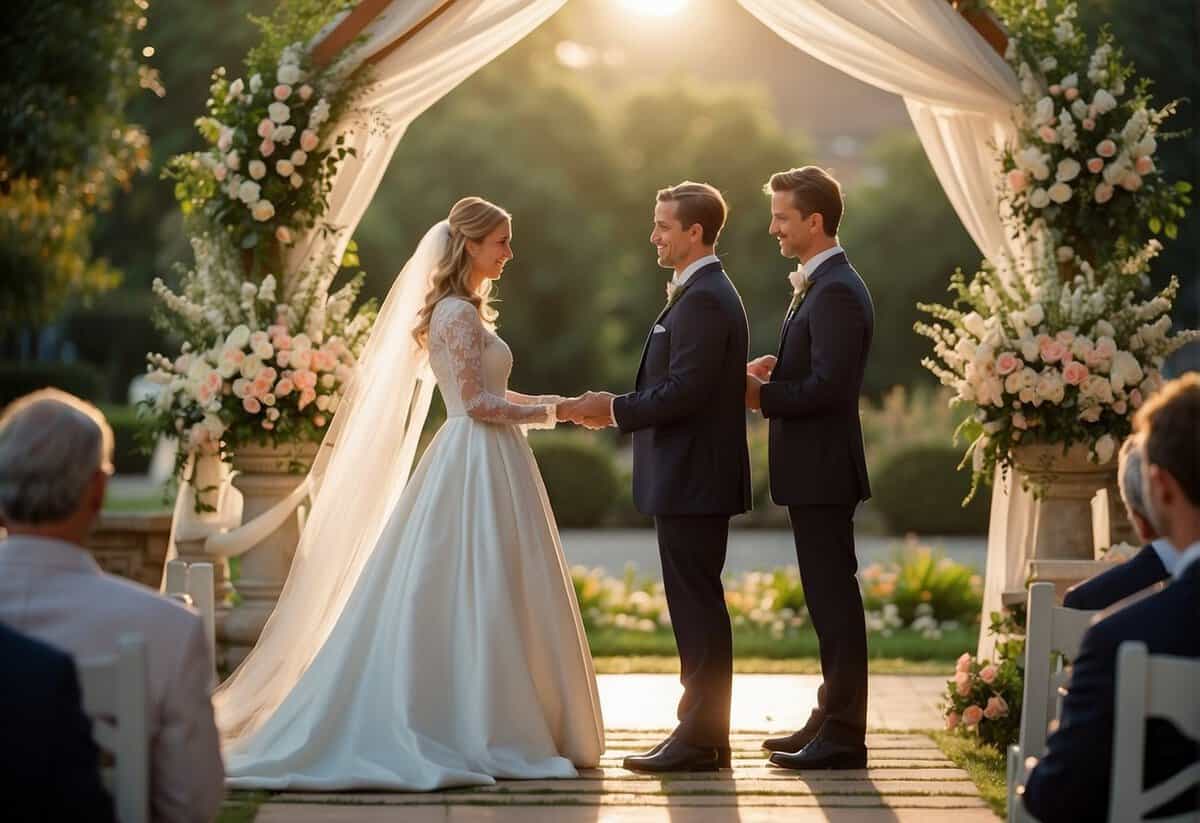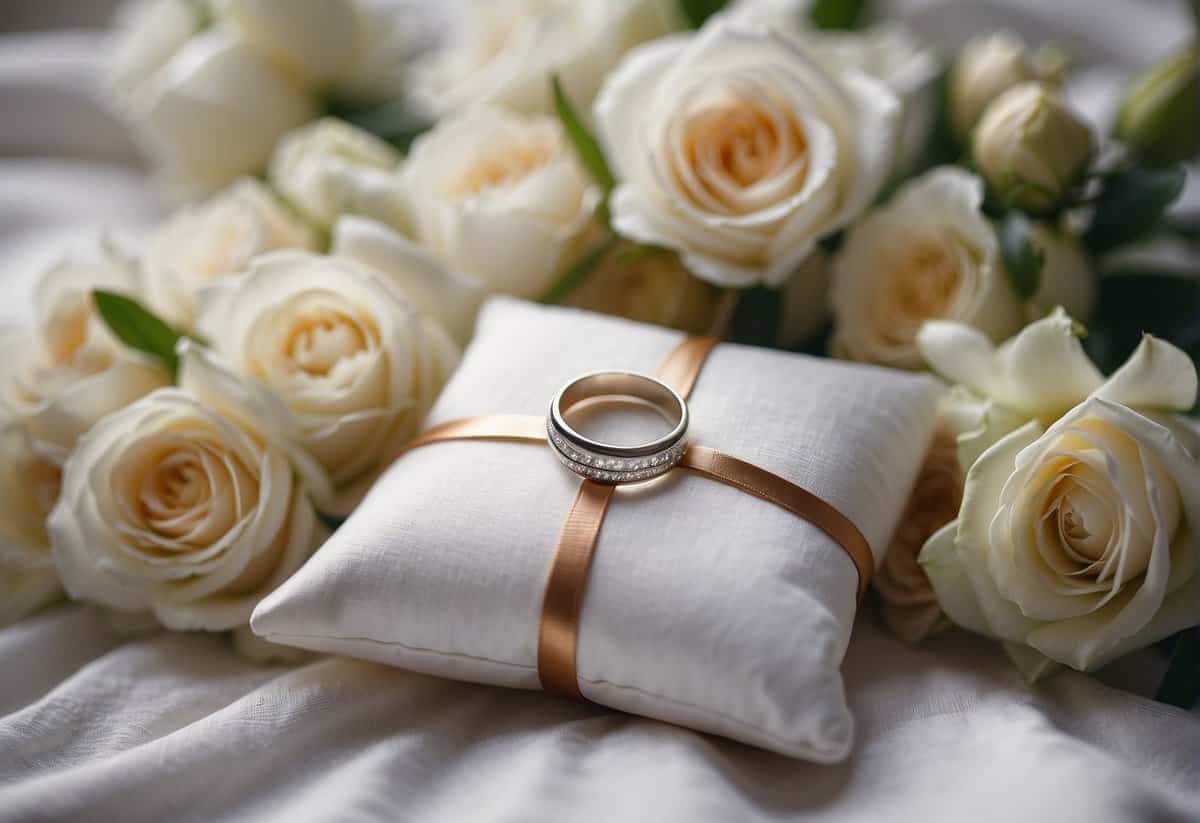What is the Proper Meaning of Wedding? Unveiling Its True Essence
A wedding is a significant symbol of commitment and love, a ceremony that not only unites two individuals in marriage but also celebrates their decision to intertwine their lives. It’s a day filled with joy, where friends and families gather to honor the love and union of the couple. The essence of a wedding goes beyond the beautiful dresses, the exchange of rings, or the festive celebrations; it’s the public declaration of two people committing to share their journey together, for better or for worse.

At the heart of a wedding are the traditions and customs that each culture brings to these ceremonies. From the vows that verbalize the couple’s promises to each other, to the roles played by family members and the wedding party, these elements encapsulate the duties and responsibilities associated with marriage. It is the intricate weaving of such elements that makes weddings so special, setting the foundation for a memorable day that is looked back on for years to come.
Organizing a wedding requires thoughtful planning to ensure the event reflects the couple’s personalities and values. From selecting a venue to answering your frequently asked questions about the proceedings, every detail contributes to the experience. Bear in mind that while the tangible elements of the day are important, it is the intangible sentiment of love and commitment that truly define the meaning of a wedding.
Key Takeaways
- A wedding is a celebration of love and a commitment between two people.
- Customary roles and elements enrich the ceremony and represent the union’s significance.
- An unforgettable wedding is crafted through careful planning and a focus on personal touches.
The Essence of Wedding Ceremonies

Wedding ceremonies are multifaceted events that blend tradition, celebration, and legal recognition into a single occasion marking the unity of two individuals. They’re a testament to the couple’s commitment and the start of their married life together.
Historical Significance
Throughout history, marriage has been viewed as a vital institution. The traditional wedding ceremony carries a significant weight of history, often involving rituals and blessings that have been passed down through generations. In a Jewish wedding ceremony, you’ll witness the breaking of a glass, which serves as a reminder of the fragility of relationships and the destruction of the temple in Jerusalem. Meanwhile, the Christian tradition incorporates the exchange of vows and rings, symbolizing eternal love and fidelity.
Cultural Variations
Every culture has its unique take on the celebration of marriage. In a Hindu wedding ceremony, you’ll see a series of rituals over several days, signifying various aspects of life and spirituality. This includes the Saptapadi, or “seven steps,” where the couple takes seven steps around a sacred fire, each step representing a marital vow. A civil ceremony, on the other hand, often forgoes religious aspects for a more secular approach but still retains the core essence of a wedding ceremony: the legal union of two people in matrimony.
Roles and Responsibilities

Your wedding is a significant event that involves careful planning and the coordination of many people. The success of your day depends largely on the clear understanding of everyone’s roles and responsibilities.
Wedding Party Composition
The wedding party is essential to the wedding process. This includes not just the bride and groom, but also the best man, maid of honor, matron of honor, bridesmaids, groomsmen, flower girls, and ring bearers. These members are selected by you, often from close family members and friends, to support you throughout the planning phase and on your wedding day.
- The maid of honor and matron of honor are there to support you, the bride, whereas the groom’s main sidekick is the best man.
- Your bridesmaids and groomsmen act as your support team, handling various tasks.
- Younger family members usually take on the roles of flower girls and ring bearers, guiding your processional with charm.
Roles can vary for certain cultures, like a Jewish wedding where a rabbi or cantor may officiate, and parents of the bride and parents of the groom might escort you during the processional.
Duties During the Ceremony
During the ceremony, each member of the wedding party has a specific duty.
- Officiant: Typically a religious leader or civil servant who conducts the wedding ceremony.
- Best Man: Ensures the groom arrives on time and holds the wedding rings.
- Maid of Honor: Assists the bride in her gown, holds her bouquet, and adjusts her train as needed.
- Bridesmaids and Groomsmen: Participate in the processional and sometimes partner up to walk down the aisle.
- Parents and Grandparents: Often involved in the entrance, especially the father of the bride, who may walk her down the aisle, and grandparents who are given a place of honor during the ceremony.
- Ring Bearers and Flower Girls: Add a touch of innocence and charm, leading the bride down the aisle by scattering petals and carrying the rings.
While you might hire a wedding planner to oversee a big event, their ultimate goal is to ensure that the ceremony aligns with your personal vision. This person plays a crucial role in coordinating the details and timeline, making sure things run smoothly. The responsibilities during your wedding are a balancing act, with all these individuals coming together to create your perfect day.
Key Wedding Elements

In planning your wedding, it’s essential to understand the various elements that make up the ceremony. Whether traditional or modern, each part holds significance and contributes to the unforgettable experience of your special day.
Symbolic Rituals and Traditions
Every culture and religion has its own symbolic rituals and traditions that add depth and personal meaning to a marriage ceremony. For instance, a Jewish wedding ceremony is typically conducted under a chuppah, a canopy that symbolizes the couple’s future home together. Customs like the ketubah signing, which is a marriage contract, and the breaking of the glass at the ceremony’s conclusion, serve as poignant symbols of the couple’s commitment. In Indian weddings, the baraat is the groom’s wedding procession, often including music and dancing, and ceremonies are traditionally held under a mandap, a beautifully decorated structure similar to the chuppah.
- Garlands might be exchanged in some cultures as a sign of mutual respect and the unity of two families.
- The ring exchange and vows are central elements reflecting the promises and responsibilities the couple is willing to undertake.
- A unity ceremony, such as lighting a unity candle or mixing sands, visually represents two lives becoming one.
- The kiss following the pronouncement of marriage is not just a romantic gesture; it symbolizes the sealing of the couple’s commitment.
Order and Structure of the Ceremony
A well-defined order and structure of the ceremony keeps the event organized and ensures that each critical moment is given the attention it deserves. Here’s a common wedding ceremony order for you to consider in your wedding planning:
- Processional: The wedding processional order typically begins with grandparents, progresses through the wedding party—including the flower girl and ring bearer—and culminates in the arrival of the bride and groom.
- Opening Remarks: Given by the officiant, these words welcome guests and introduce the meaning of the day.
- Readings: Short pieces read by loved ones can add a personal touch to your ceremony.
- Vow Exchange: The heart of the ceremony where you promise your commitment to each other.
- Ring Exchange: The tangible symbol of your vows is placed on each other’s fingers.
- Unity Ceremony: A specific ritual symbolizing the joining of two into one.
- The Kiss: You are officially announced as a married couple, and the kiss marks the celebration.
- Recessional: The moment you walk back up the aisle as a married couple to the sound of joyful music.
Whether it’s a traditional wedding ceremony in a religious service or a modern, non-religious celebration, the emotions and the sense of unity that wedding rituals embody make your wedding day extraordinarily meaningful. Remember that the structure is there to serve as a guide—your ceremony can be as unique as you want it to be, and it can include language and traditions that reflect both of your values and personalities.
Organizing a Memorable Wedding

When you embark on the journey of wedding planning, think of it as crafting the story of your big day. Here’s a friendly guide to help you through the process.
Initial Planning:
- Find a wedding planner to support and streamline your experience.
- Begin with the engagement celebration to set the tone for your upcoming nuptials.
Emotional Core:
- Reflect on the emotions and commitment you wish to convey. Your vows are not just words; they’re a promise.
- Study traditional wedding ceremony structures or explore modern alternatives, like writing your ketubah or personalizing your wedding ceremony order.
Ceremony Details:
- Decide on your wedding processional order, ensuring it includes everyone significant, from the officiant to your daughter or close relatives.
- Choose a church, outdoor setting, or any venue that resonates with your vision.
Creative Touches:
- Add a splash of creativity to your day. It could be a unique guide to your love story or a custom decorative element that showcases your personality.
Vendor Coordination:
- Building a team of vendors you trust is crucial. They will be the backbone, providing the services that bring your day to life.
While planning your wedding, remember that at its heart, it’s a celebration of love and devotion. Your focus, energy, and passion will make it a truly memorable occasion!
Frequently Asked Questions

In this section, you’ll find answers to some of the most common questions about the significance and components of weddings, their historical origins, and how they have changed over time.
What does a wedding typically symbolize?
A wedding often symbolizes the beginning of a partnership and a commitment to life together. It’s a celebration of love, unity, and a shared future between you and your partner.
What are the origins of the wedding tradition?
The tradition of a wedding has roots in ancient history, with early ceremonies marking the alliance between families and the start of new households. Various elements from different cultures have shaped the way you celebrate weddings today.
What are the key components of a wedding ceremony?
Key components of a wedding ceremony usually include the exchange of vows, presentation of rings, and a pronouncement of marriage. These elements signify your promises to each other and the official start of your marital bond.
How is a wedding defined in religious contexts?
In religious contexts, a wedding can be defined as a sacred ceremony before God or higher power, formalizing the covenant between you and your partner. Each religion may have its own rites and rituals to recognize and celebrate this union.
What is considered the main purpose behind having a wedding?
The main purpose behind having a wedding is to publicly declare your commitment to each other. It serves to legally and socially recognize your decision to build a life together as a married couple.
How has the concept of a wedding evolved over time?
The concept of a wedding has evolved from a transactional agreement to a personal celebration of love and partnership. While it used to be heavily influenced by societal norms, today you have the freedom to tailor your wedding to your preferences and values.

